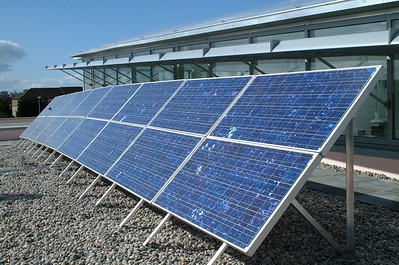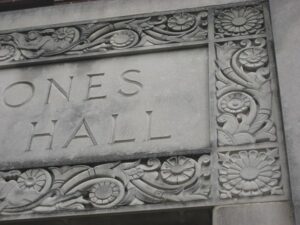On paper, WCC’s Board of Trustees values energy efficiency. They’ve passed a policy that requires the College to build new buildings to LEED Silver certification. They’ve invested millions in more than 140 geothermal wells for heating the OE and Great Lakes buildings. (Even if they seem to have forgotten where they are.) On the other hand, WCC spends more per cubic foot on energy than any other community college in the State of Michigan.
Energy costs for academic buildings are huge, in part, because academic buildings are huge. Other factors that impact energy costs include the age and maintenance condition of the HVAC system; and the design of the building.
More than half of all electricity consumption on campus goes toward ventilation, computer equipment and lighting. Heating accounts for more than 90% of campus natural gas use. So, projects that involve HVAC, computer equipment and lighting have a direct, immediate impact on WCC’s expenses. Those impacts could be good or bad, depending on what WCC chooses to do.
When the College chooses to defer maintenance and upgrades on heating and cooling systems, it commits the taxpayers to paying more for energy. When WCC defers replacement lighting projects (like the one at the FEB), it comes at the expense of reducing energy costs at the College.
Committing to energy efficiency is committing to saving money
It’s problematic when the College chooses to spend the money to pursue LEED certification, but then doesn’t take the necessary steps to maintain it. The Health and Fitness Center, for example, was built to LEED Silver certification. It’s registered as a LEED-certified building, but the certification has never been revalidated. Maybe we need a separate Board Policy that requires the College to maintain LEED certification.
It’s also problematic when the Trustees don’t remember spending millions of dollars to install a geothermal heating system for the Occupational Education and Great Lakes Buildings. Because then they encourage consultants to turn that space into a high traffic area on the new Master Plan. (Geothermal wells can’t take that.) So have we wasted money on the geothermal wells or on the Master Plan?
It’s also troubling when one trustee consistently asks for building projects to incorporate solar energy into building design, and those requests get ignored. It’s not like he’s asking about it after the building design is set. He’s asking at the planning stage. Solar systems could significantly decrease WCC’s electricity costs. They even pay for themselves, and they can last 20 years or more. (Unlike the Health and Fitness Center, which apparently can do neither.)
Energy policies that govern new construction are fine, but the College needs coherent energy policies for existing buildings. Energy leadership starts with the Board of Trustees, but policies aren’t sufficient. The Trustees must demand the administration implement practices to maximize energy efficiency, and reduce both energy costs and consumption.
Photo Credit: Colt International Limited, via Flickr.com


















